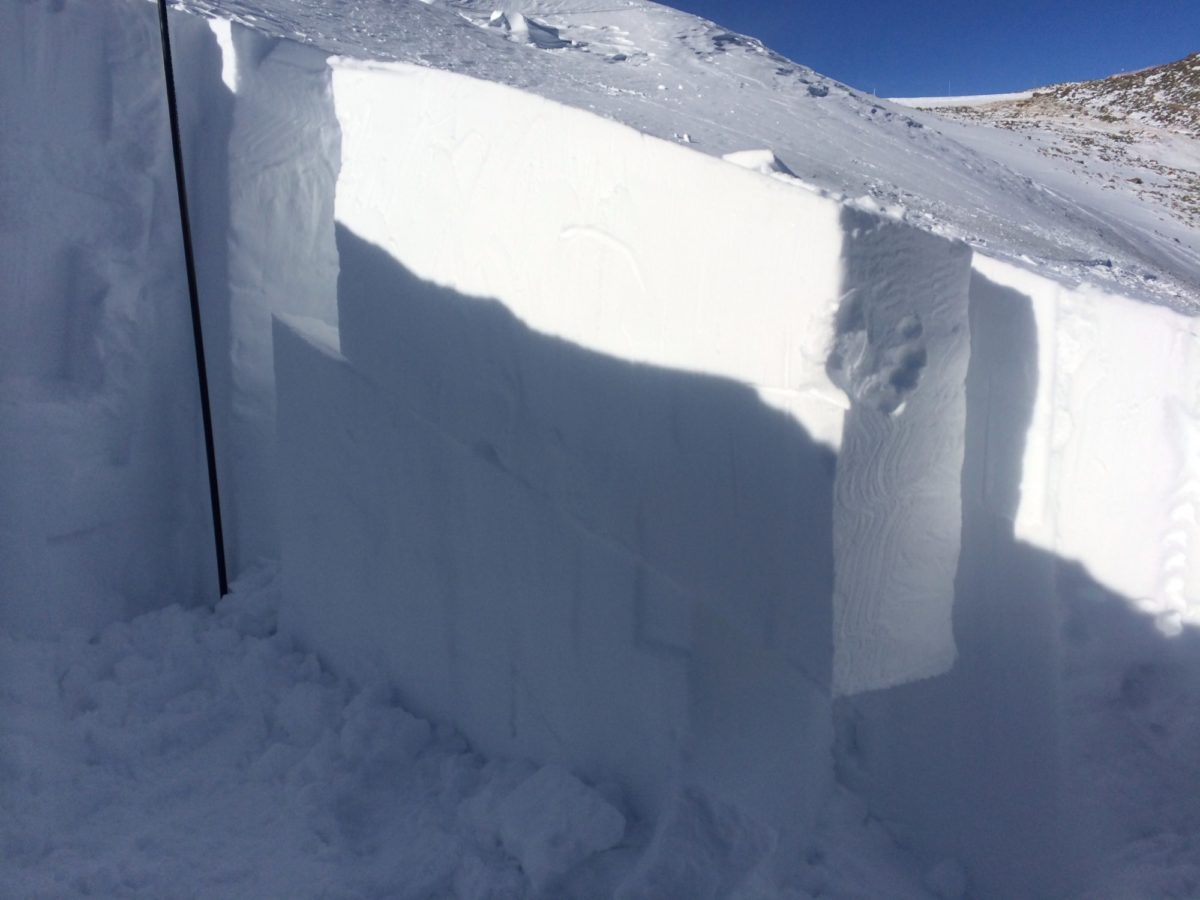A wide column test of propagation propensity by cutting a failure into the weak layer.
The Propagation Saw Test, or PST, is a long column test where a failure is cut into a pre-identified weak layer to test its propagation propensity. While most tests rely on tapping a shovel on the surface to initiate a crack, the PST directly initiates a crack by using a saw to cut the weak layer. One advantage of this method is it is a more reliable test on deeper weak layers; however, initial research suggests the PST may also have a higher false-stable rate than some other column tests. To conduct the PST, isolate the column on all sides (30 cm wide, 100 cm or more upslope) and drag a blunt edge of the saw upslope through the weak layer. Fracture propagation is considered to be likely only if the fracture propagates to the end of the column along the same layer (PST End) and initiates when the length of the saw cut is less than 50% of the length of the column.
